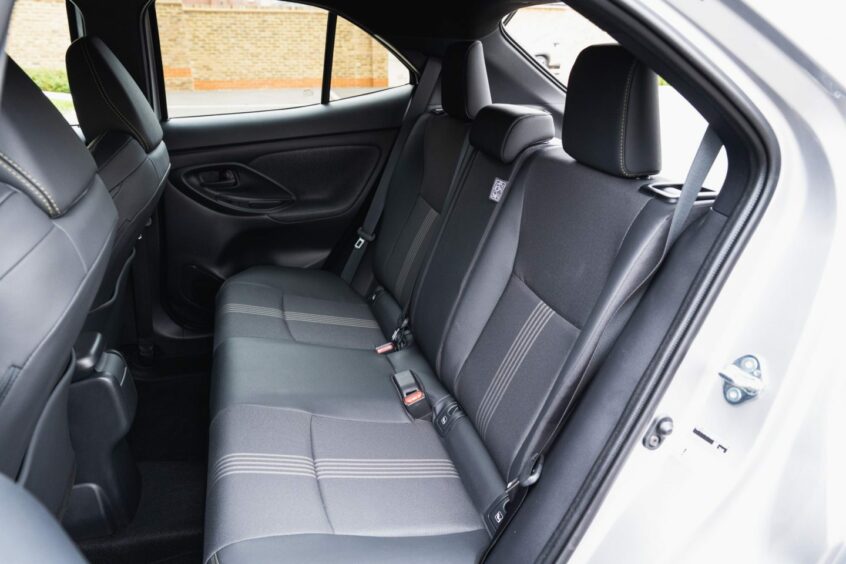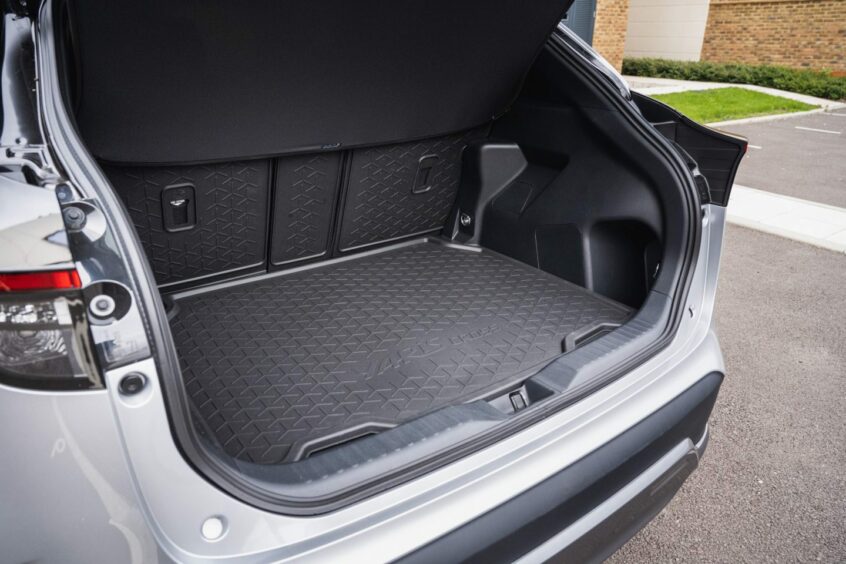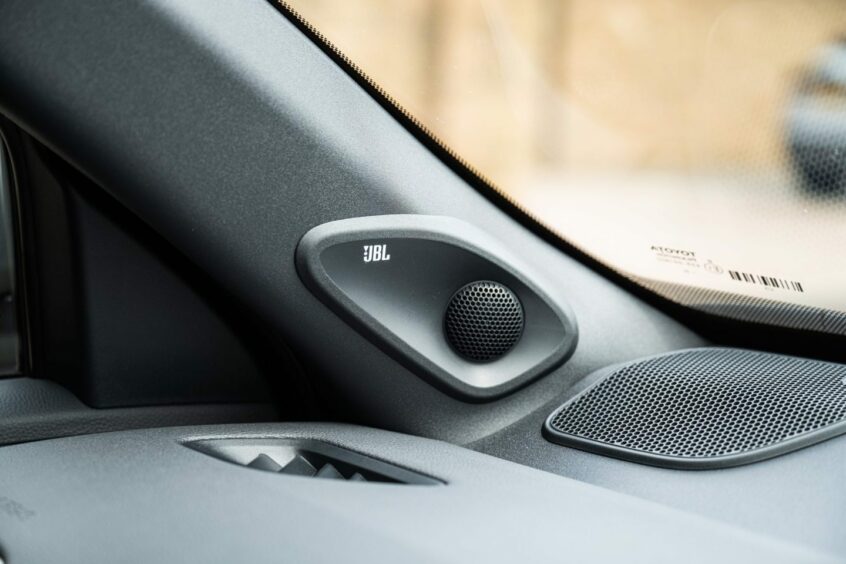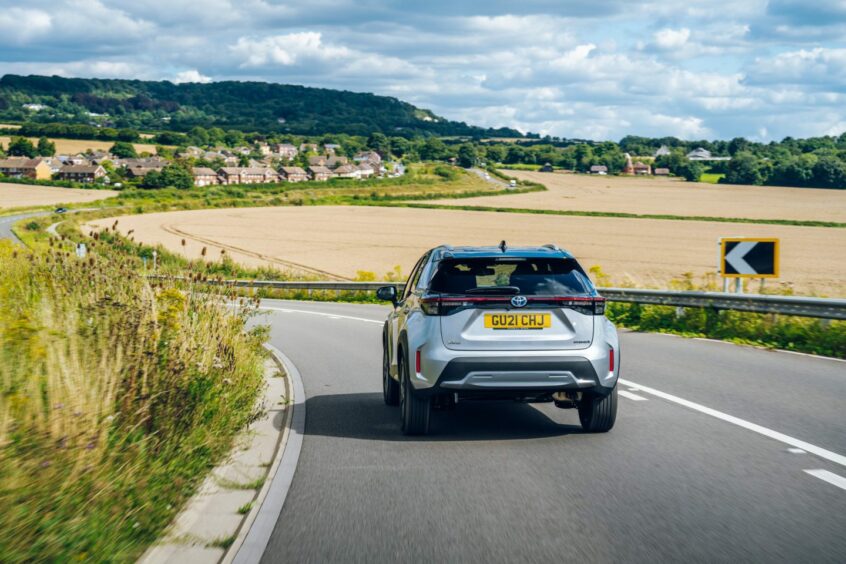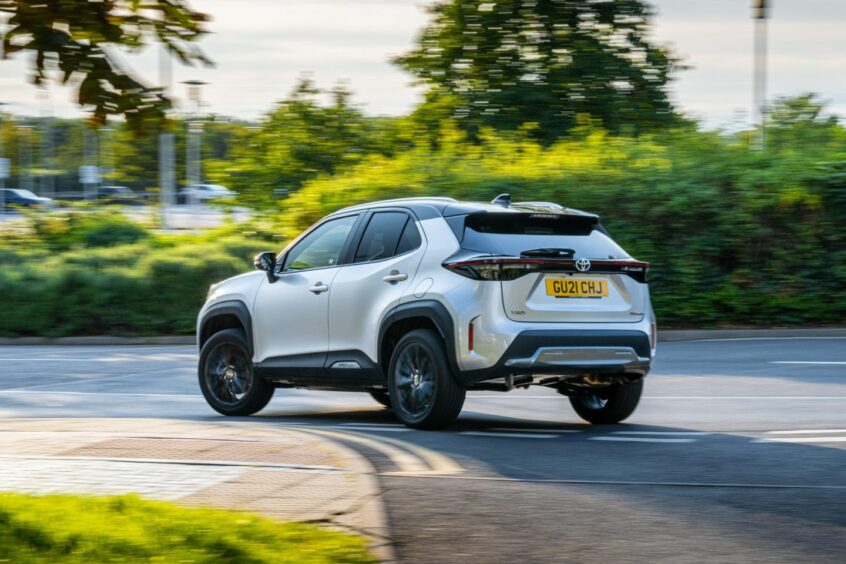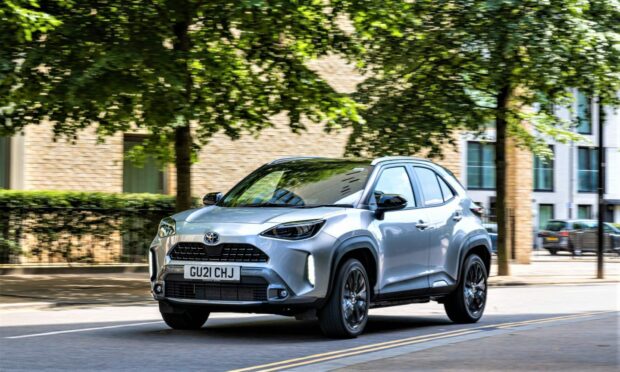The Yaris Cross is a jacked up SUV version of Toyota’s popular supermini.
Taller than the standard Yaris, it has a higher driving position. Tough plastic wheel arch cladding and a body kit give it a more rugged appearance too.
SUVs are hugely popular these days so it comes as no surprise that the Toyota Yaris Cross is just one of a sea of similar models you can buy.
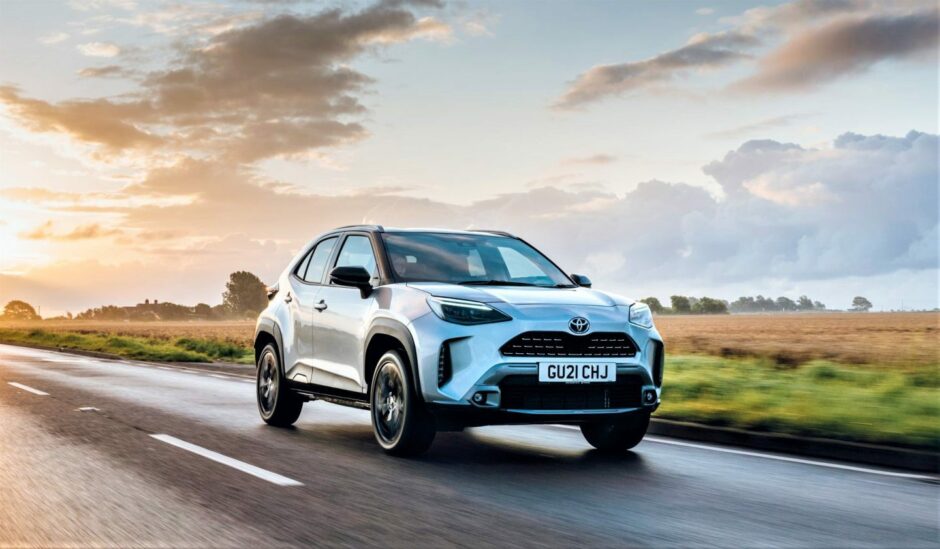
The Nissan Juke, Peugeot 2008, Ford Puma, Renault Captur and Vauxhall Mokka are just a few of its rivals.
So what sets it apart? Well, to start with it’s a good-looking car. Some small SUVs – I’m looking at you, Nissan Juke – have marmite styling. With its chunky appearance and neat proportions, the Toyota Yaris Cross should appeal to most car buyers.
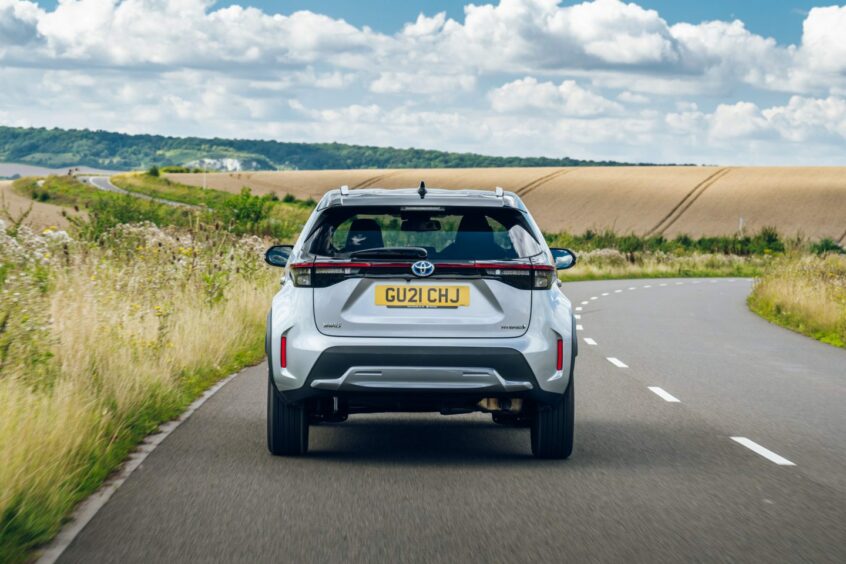
Then there’s the powertrain. Toyota pioneered hybrid systems and it comes as no surprise that the Yaris Cross pairs a 1.5-litre petrol engine with an electric motor and battery.
Finally, there’s Toyota’s legendary reliability. The Yaris Cross is likely to be a car you can hang onto into its old age with minimal repair bills.
So what’s it like? I headed out in it to spend some time driving the Toyota Yaris Cross on Scottish roads.
Although it’s not a plug-in hybrid, the Yaris Cross will run solely on electric power around town and in car parks if you’re gentle with the throttle.
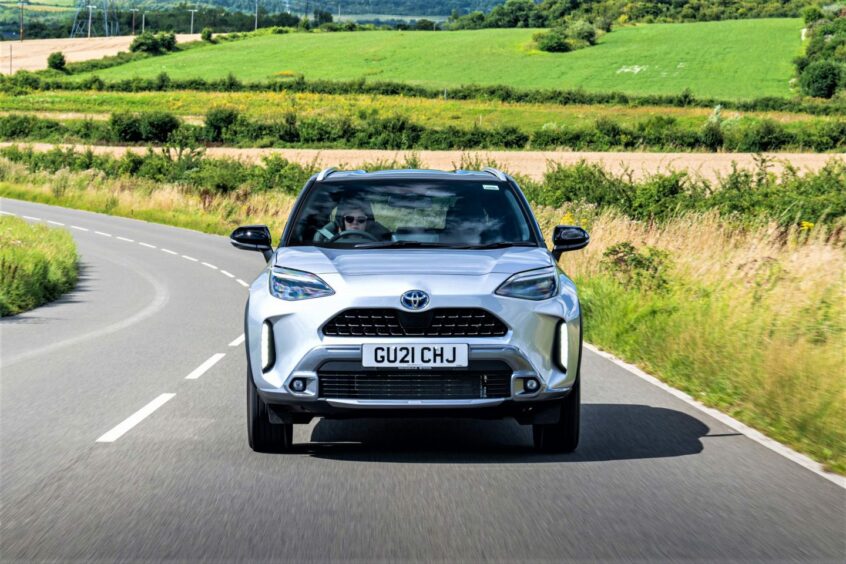
That helps save fuel and also keeps emissions low in urban areas where pollution is an issue.
A higher driving position makes it an easy car to get into and out of. You’re not quite up there in the gods with Range Rover drivers but you do get a clear view of the road ahead from your elevated perch.
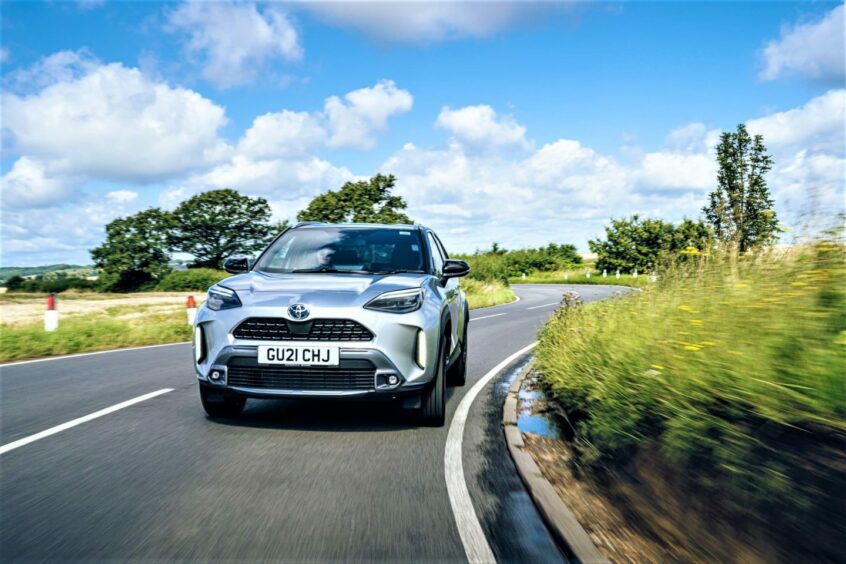
When the petrol engine does kick in it comes to life quietly. However, automatic versions use Toyota’s CVT (continuously variable transmission) gearbox. This is fine as long as you go easy on the throttle.
Floor it to overtake and it buzzes angrily. This won’t bother everyone but I found it a bit annoying.
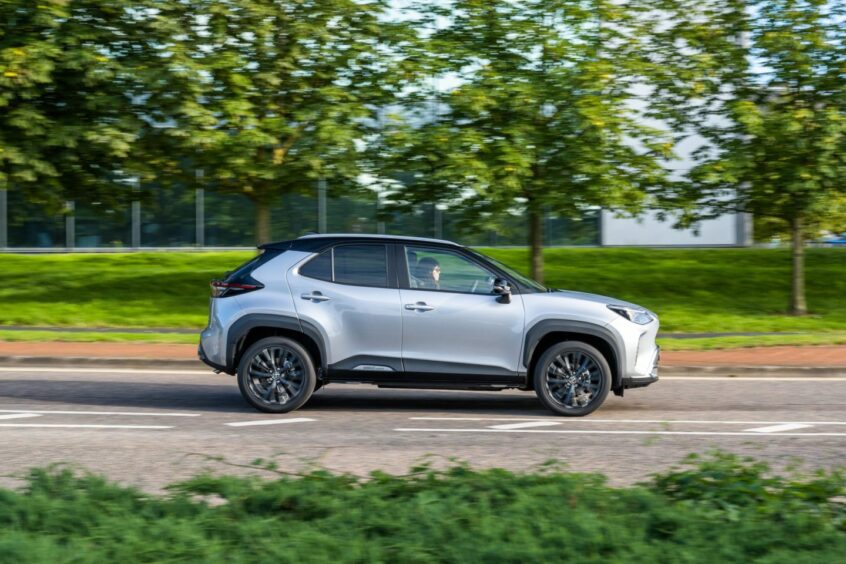
That gripe aside, there’s very little to fault the Toyota for. Handling isn’t quite as sharp as the Ford Puma’s but it grips nicely enough. Ride quality is good, while wind and road noise are kept well in check.
At 11.2 seconds its 0-62mph time isn’t going to set the heather alight, but then it isn’t a sports car.
The vast majority of Yaris Cross models are front-wheel drive. However top spec Dynamic trim can be had with four-wheel drive. Most drivers won’t need it, but if you live in a rural part of Scotland it might be handy to have for winter driving.
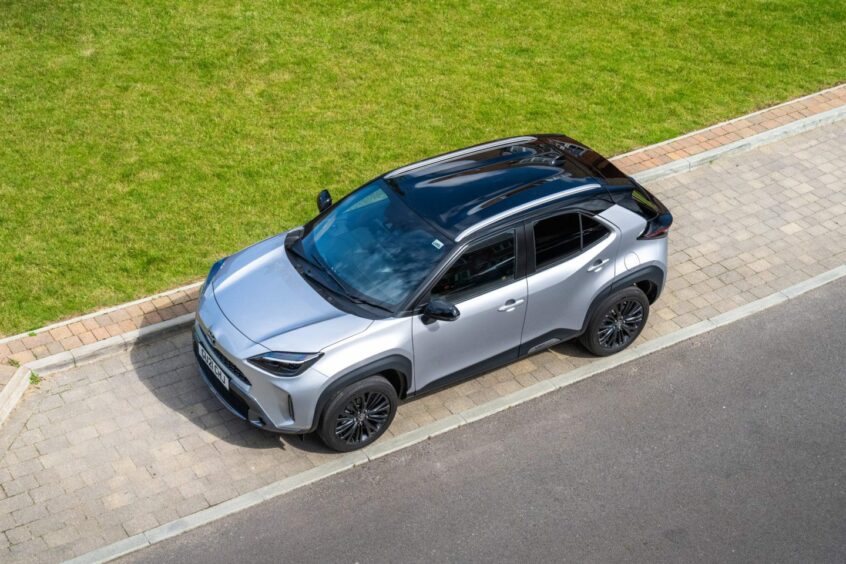
Prices for the Toyota Yaris Cross start at a little over £24,000 and reach just shy of £32,000 for top-spec models. My front-wheel drive version with automatic transmission in mid-spec Excel trim cost £28,295.
Fuel economy is one of the car’s strong suits. On paper, it returns 56.5mpg. However, I found it to be one of those rare models that outperforms its official figures in real-world driving.
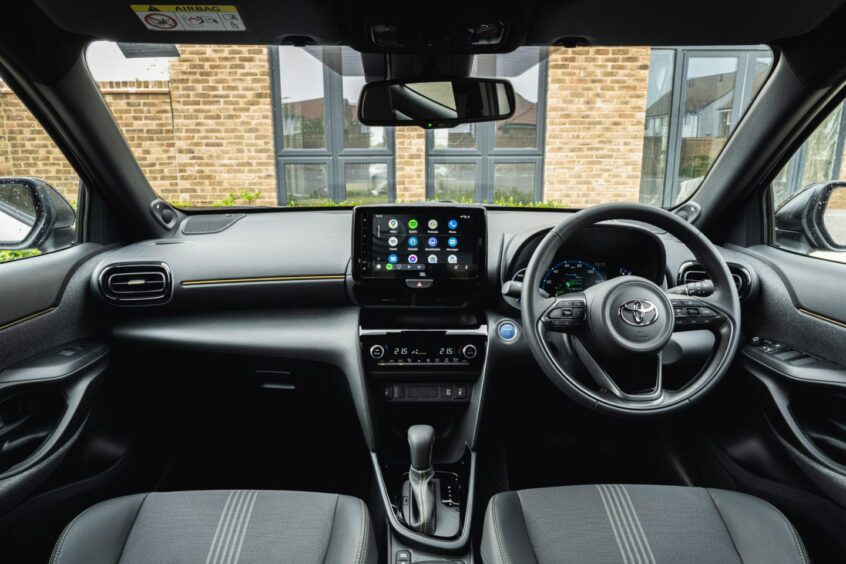
Over an hour-long route, I easily averaged above 60mpg. In an era of expensive fuel and rocketing energy bills, such frugality is not to be sniffed at.
Inside, the Toyota Yaris Cross is as well kitted out as most of its rivals. It scores especially high on safety, with even entry-level models coming with a slew of tech designed to keep you and yours from harm.
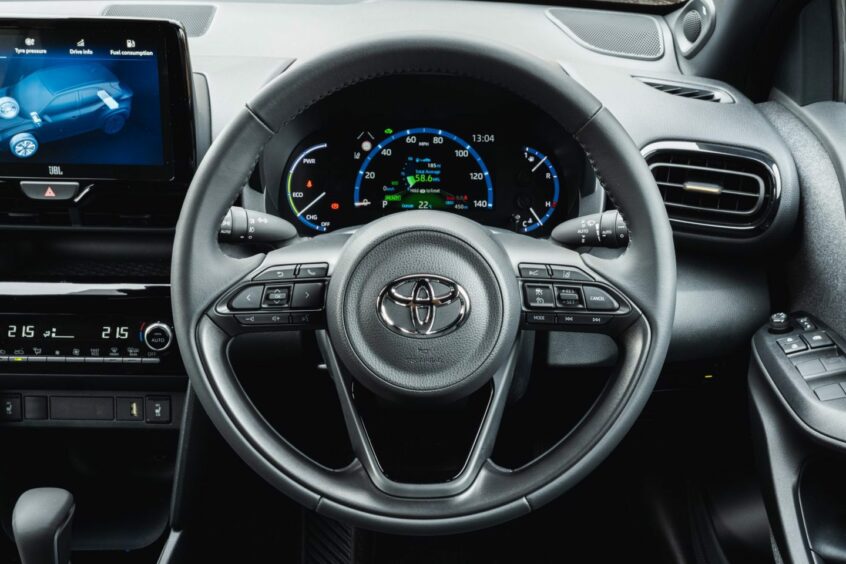
The Interior space is good, with that higher ceiling giving enough headroom for taller adults in the front and rear. At 397 litres the boot is bigger than that of a Vauxhall Mokka and around the same size as a Ford Puma’s.
The cabin is well laid out, with a touchscreen anchoring the dashboard but user-friendly dials and buttons for essential controls such as the heating and fans.
I enjoyed my time in the Toyota Yaris Cross. It’s a handsome and practical little SUV that drives well and offers extremely good fuel economy.
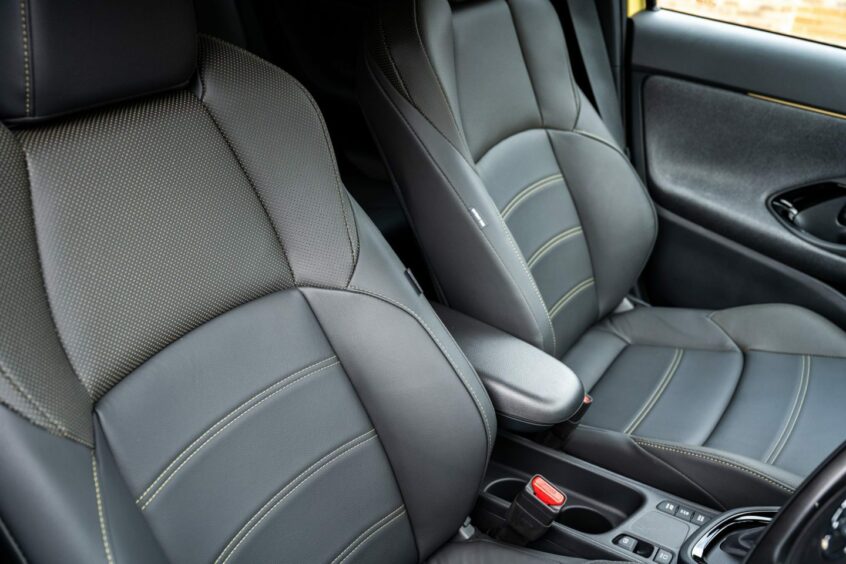
The Facts
Price: £28,295
0-62mph: 11.2 seconds
Top speed: 106mph
Economy: 56.5mpg
CO2 emissions: 112g/km
